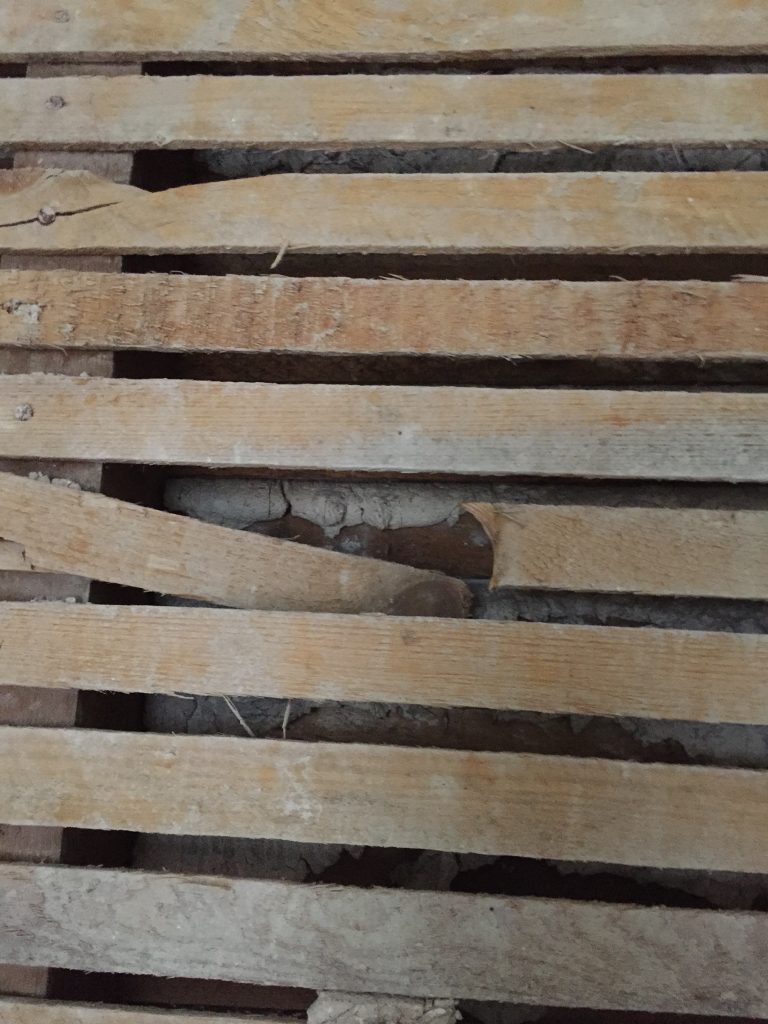Can You plaster over wood?
Yes, you can plaster over wood, but there are things you need to know first and do the right prep. We will get to that a little later on.
The problem when you plaster over wood
Plaster does not stick very well to the surfaces it is not designed for, and when I first started plastering many, many, many years ago, a phrase I always remember is
“Plaster on wood is no good!!”
Plaster tends to need a key, and wood does not have a great key at all. Even if you found some wood with a great key, there are other problems to consider.
Wood tends to be quite absorbent and reacts to temperature and humidity, where the wood expands and contracts. The plaster does not expand or contract at the same rate as wood, so when the wood does expand, it can crack the plaster and, in some circumstances, blow the plaster off the wall or ceiling.
Lath and Plaster is Plaster Over Wood
In the old days (before my time), plasterers would use strips of wood tacked to studs and then plaster over these laths and the plaster would push through and create a mushroom effect behind the laths that, when dry, the plaster would lock into place.

This method of plastering can still be found throughout the UK and works very well. Many listed buildings still have to use this method of plastering which is now carried out by mainly specialist plasterers. Only this week, I was removing a lath and plaster ceiling, but instead of replacing the laths and plastering it the traditional way, we were allowed to use plasterboard.
One of the problems with lath and plaster in modern homes is that the laths get very dry, and with modern central heating systems, the ceilings and walls dry, and the mushroom plaster that grips behind the laths breaks off, and once that has happened, the strength is gone and over time the plaster will fail.
I need to Plaster over wood, but how do I do it?
If you need to plaster over wood, you will need to find a way to create a key and control and manage the expansion and contraction of the timber. You may or may not realise that many houses have a wall plate on which the timber that holds the ceiling up sits. This would get wire mesh tacked to it. This mesh is often called expanded metal lath or EML, and it can be screwed, nailed or even stapled to the timber. I usually like to leave it a bit gappy between the wood and the EML so that when I push my backing plaster onto it, the EML is embedded nicely and increases the strength.
You can get EML in big sheets or in handy rolls. I always have a small roll of EML in my toolbox for when you don’t expect to find some wood.
Remember to make sure you use galvanised screws or nails, as you don’t want these fixings to rust and start grinning through the plaster.
Can You Plaster Over Wood Using Building Paper?
We are going back now, and I am wondering if you can still get building paper, but it is worth mentioning.
If you are using sand and cement to render over plywood or OSB, then in the old days, you would first apply the building paper over the wood and then fix your EML over that. Then apply your scratch coat and finish as you would any other sand and cement render.
The reason why you would apply building paper is so that the wood could expand and contract behind the building paper, and the EML would create a key for the plaster to hold on to it and stop the render from cracking or blowing (falling off).
I have not seen building paper used in many years, but I have not seen sand and cement used in a long time.
Plasterboard To Cover wood
Using plasterboard to plaster over wood is not always possible, but it can be done and knowing that plasterboard can be used is always a good thing.
If you remove an old lath and plaster ceiling or lath and plaster wall, then use plasterboard as you would any other stud wall. Also, if you have old wooden lintels or wooden wall plates, you can screw plasterboard over them and then use something like bonding plaster to bring the depth up ready for skimming.
Using EML or stainless steel/galvanised mesh is fine for most situations. Still, sometimes you don’t have any available at the time, and most plasterers or even DIYers have plasterboard to hand.
In Conclusion
To answer the question, ‘can you plaster over wood?’ the answer is yes, when you do the correct preparation and when the wood has been set out in a way that would work. However, if you want to plaster over a sheet of plywood or OSB, then the answer is no, you cannot plaster over wood.